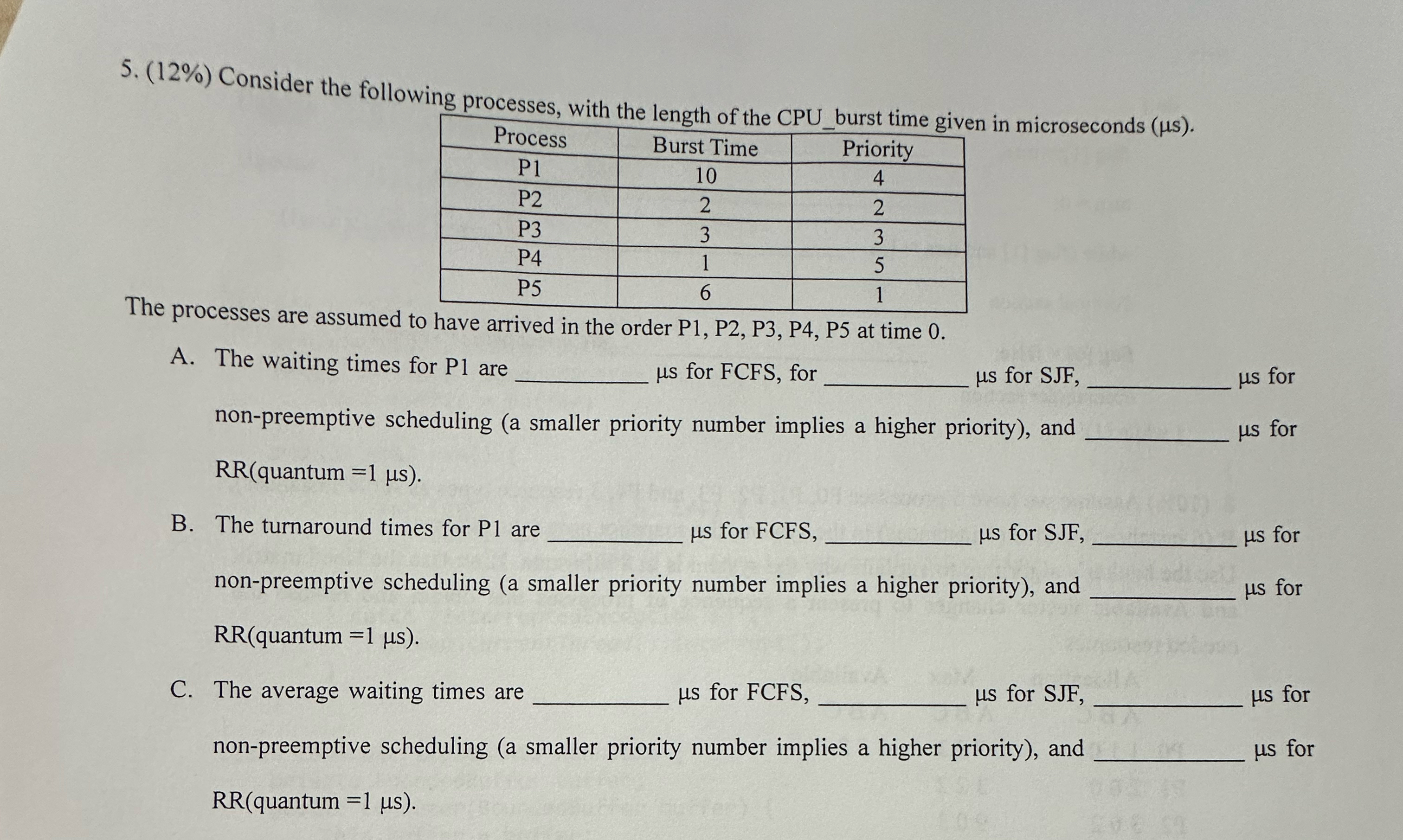Answered step by step
Verified Expert Solution
Question
1 Approved Answer
( 1 2 % Consider the following processes, with the length of the CPU _ burst time given in microseconds ( s ) .
Consider the following processes, with the length of the CPUburst time given in microseconds s
tableProcessBurst Time,PriorityPPPPP
The processes are assumed to have arrived in the order P P P P P at time
A The waiting times for are s for FCFS for s for for nonpreemptive scheduling a smaller priority number implies a higher priority and is for quantum
B The turnaround times for P are sor FCFS s for SJF for nonpreemptive scheduling a smaller priority number implies a higher priority and is for quantum
C The average waiting times are s for FCFS s for SJF for nonpreemptive scheduling a smaller priority number implies a higher priority and s for quantum

Step by Step Solution
There are 3 Steps involved in it
Step: 1

Get Instant Access to Expert-Tailored Solutions
See step-by-step solutions with expert insights and AI powered tools for academic success
Step: 2

Step: 3

Ace Your Homework with AI
Get the answers you need in no time with our AI-driven, step-by-step assistance
Get Started


